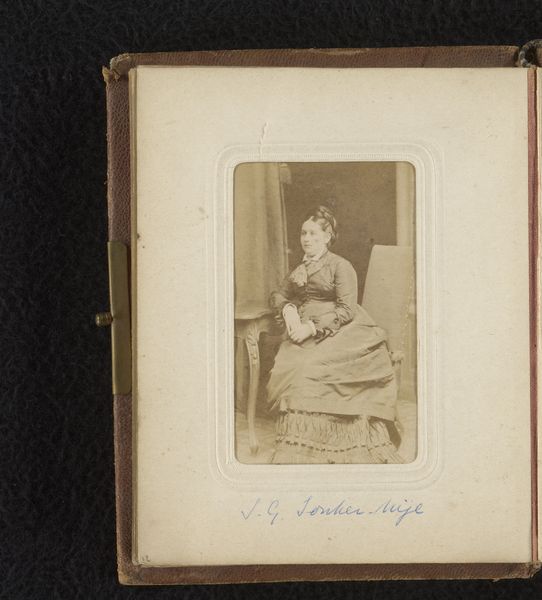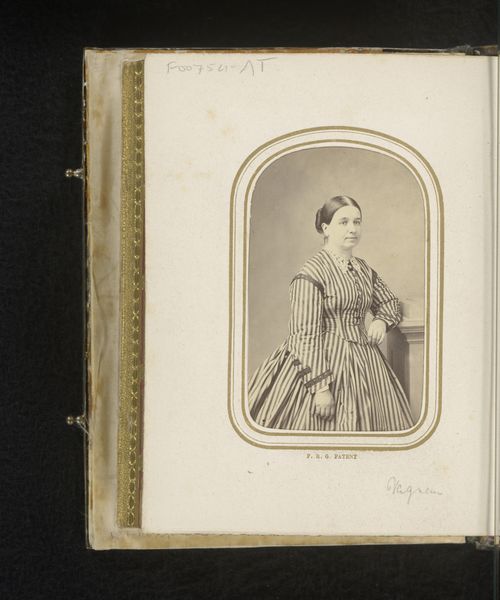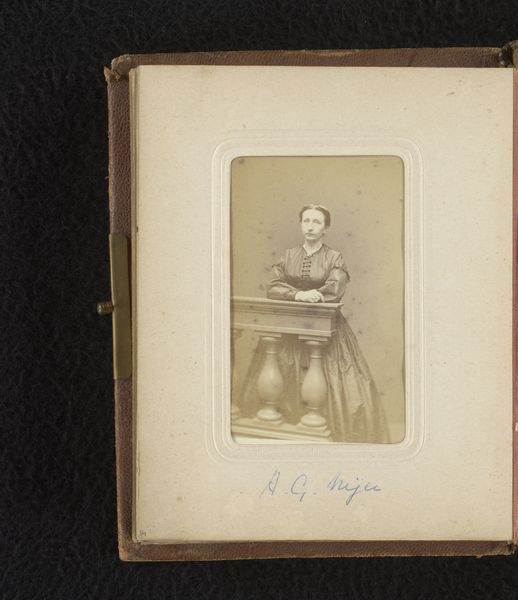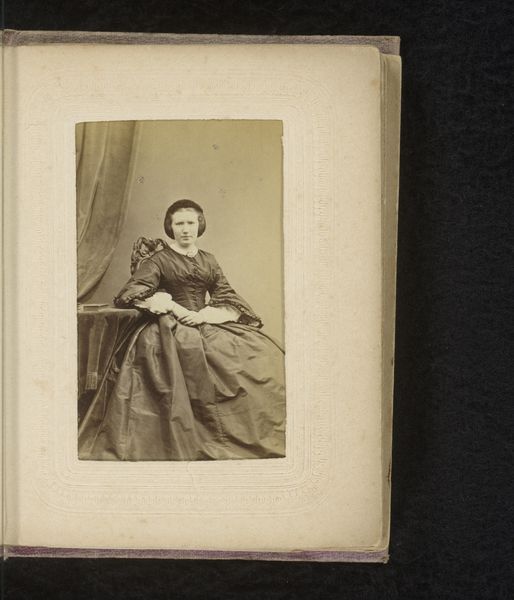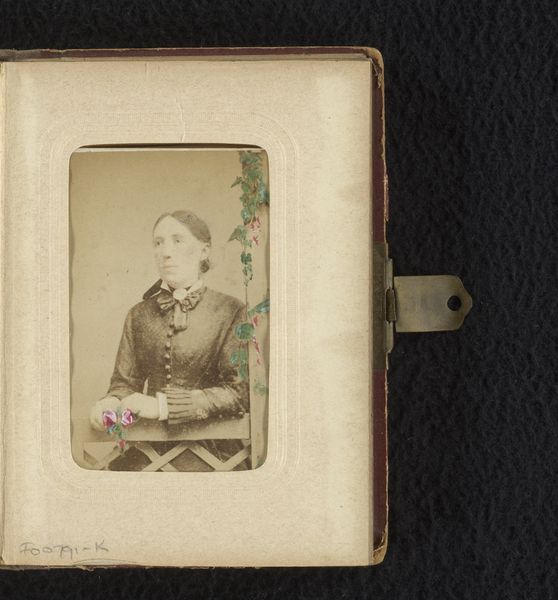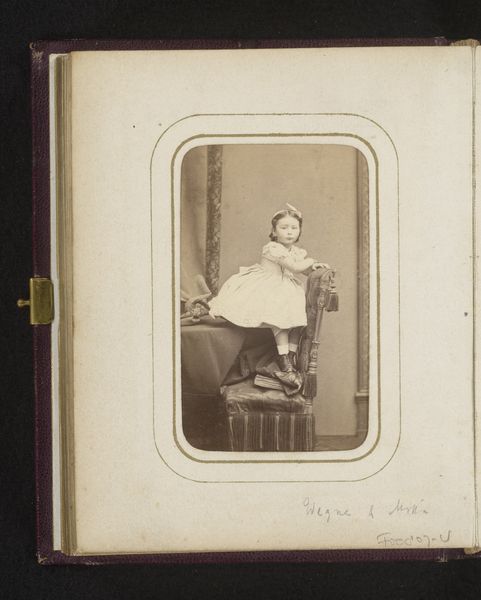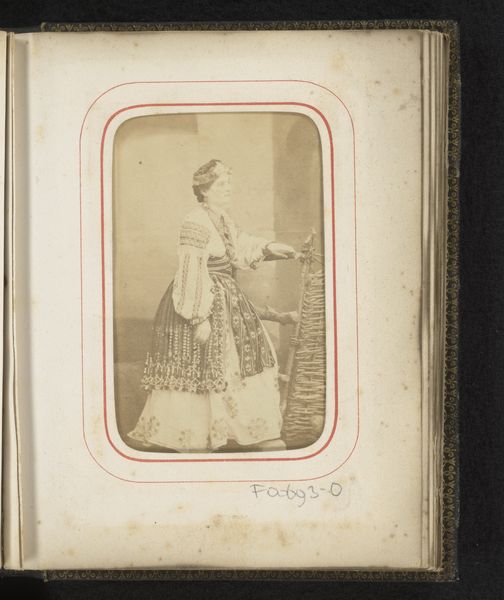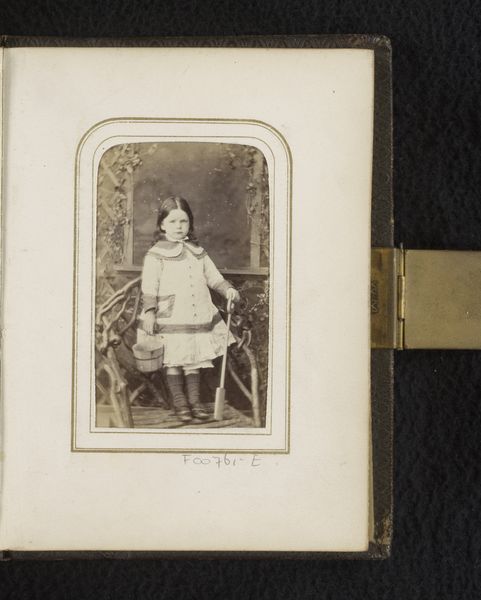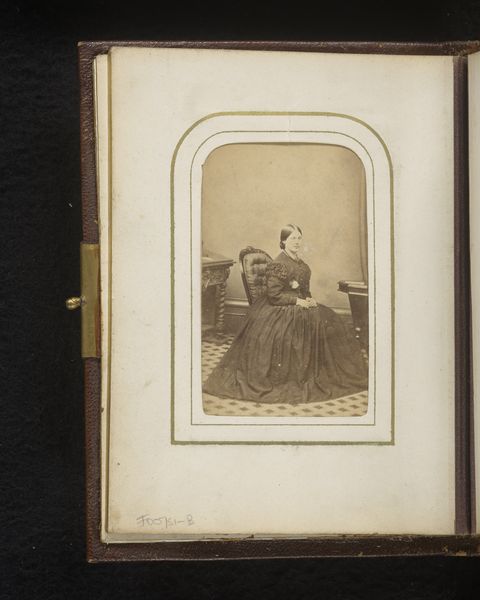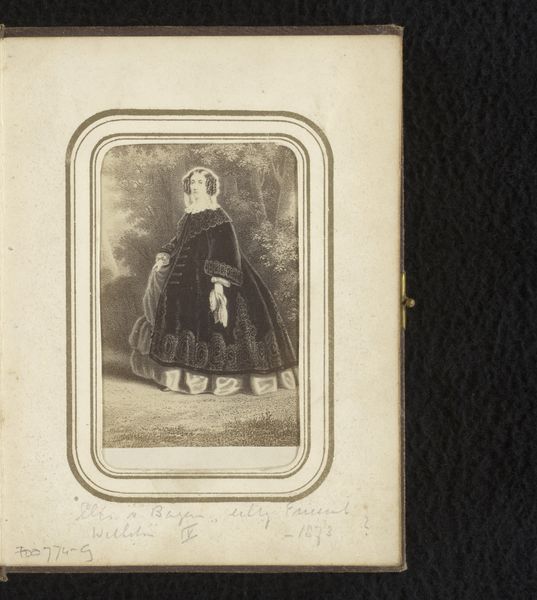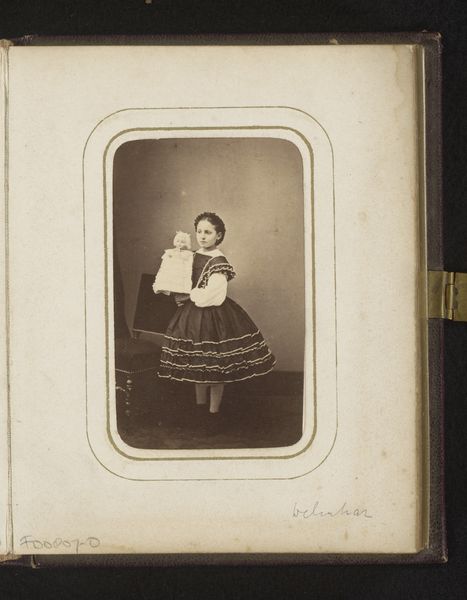
photography, albumen-print
#
portrait
#
photography
#
coloured pencil
#
albumen-print
Dimensions: height 85 mm, width 51 mm
Copyright: Rijks Museum: Open Domain
Editor: We're looking at a photograph called "Portret van Maria Engelina Jonker" created sometime between 1870 and 1880 by Albert Greiner, residing here at the Rijksmuseum. It's an albumen print. The portrait possesses an alluring dream-like quality... almost otherworldly. What draws your attention in this composition? Curator: Certainly. Observe how Greiner masterfully utilizes light and shadow. The subject, Maria, is illuminated softly, while the background dissolves into an ethereal haze. The meticulous detailing of her dress—note the ruffles and folds—provides a compelling contrast to the overall softness. Ask yourself, what purpose do these juxtapositions serve in shaping the viewer's experience? Editor: It's interesting you point out the details in her dress. To me, the details create a sense of realism that sharply contrasts with the dreamlike state of the portrait, emphasizing Maria's presence. Does this interplay suggest a commentary on the nature of representation itself? Curator: An astute observation. Indeed, the artist is engaging with the semiotics of photography. Consider how the albumen print process itself—its inherent limitations in capturing reality—contributes to this tension. Does this contrast, between perceived reality and constructed image, provoke further contemplation regarding the function of portraiture in that era? Editor: Yes, the detail creates a unique tension in the photograph that adds to the mysterious tone. I never thought I'd appreciate the technique this much! Curator: Indeed. By closely examining the formal elements—the play of light, the textures, the composition—we begin to unravel the complex layers of meaning embedded within this portrait.
Comments
No comments
Be the first to comment and join the conversation on the ultimate creative platform.
